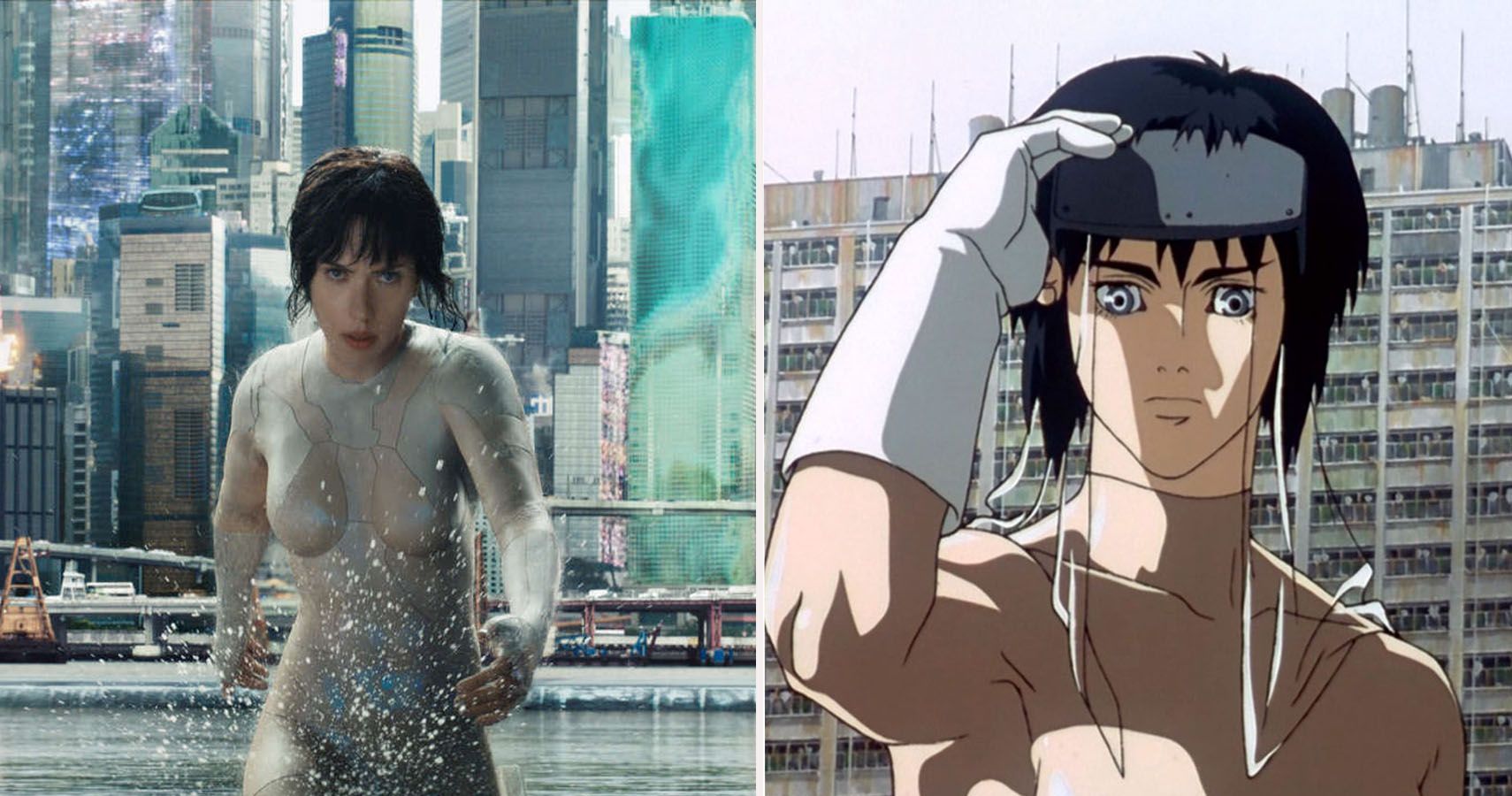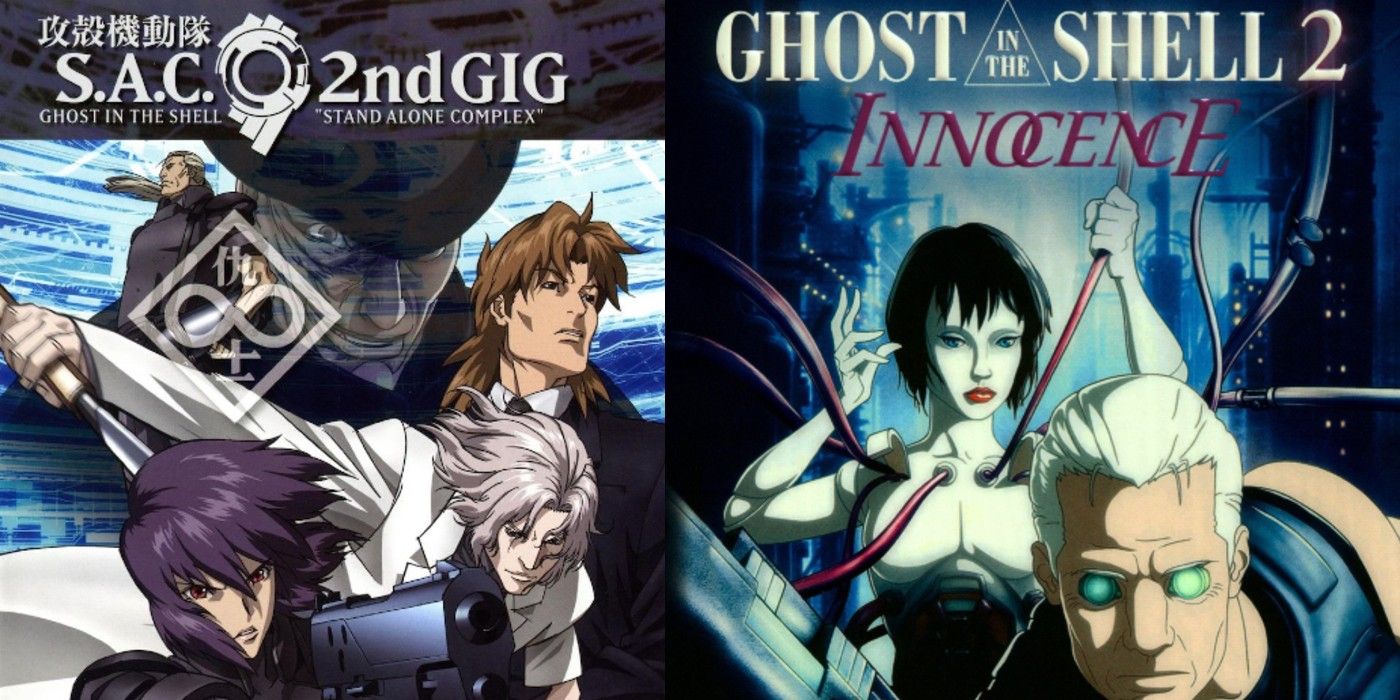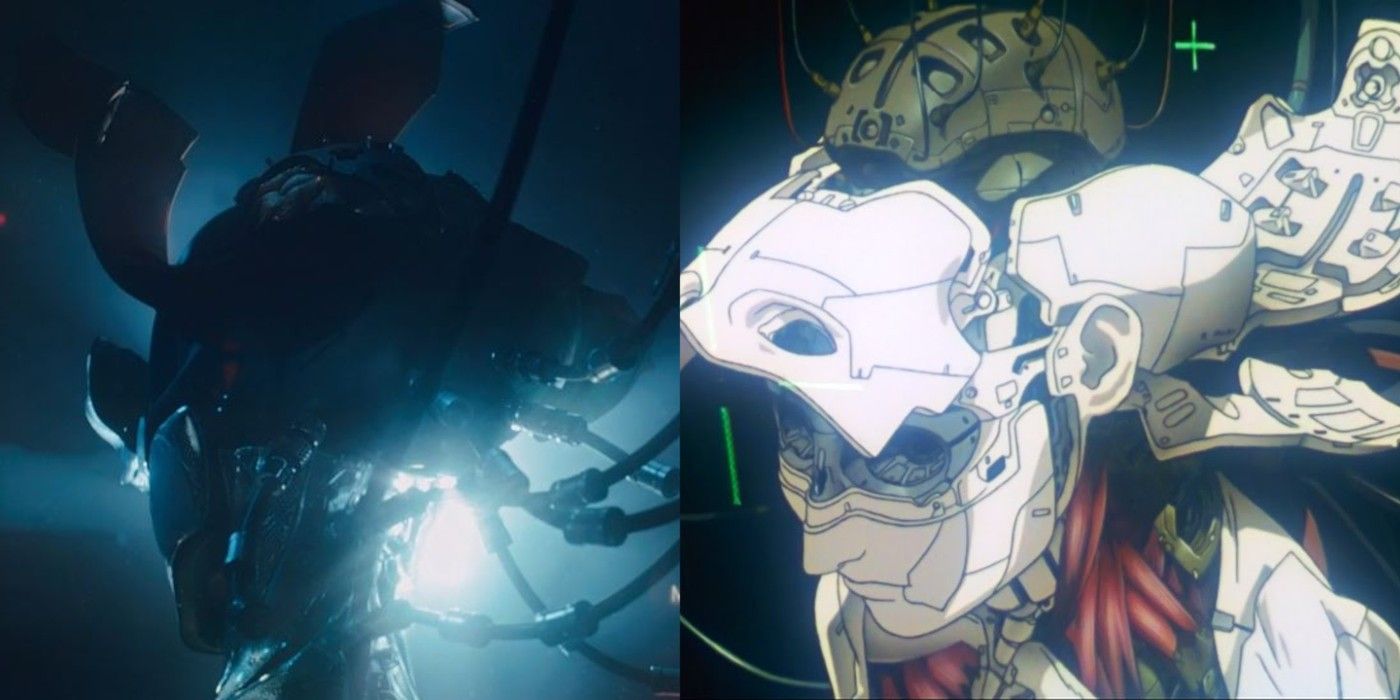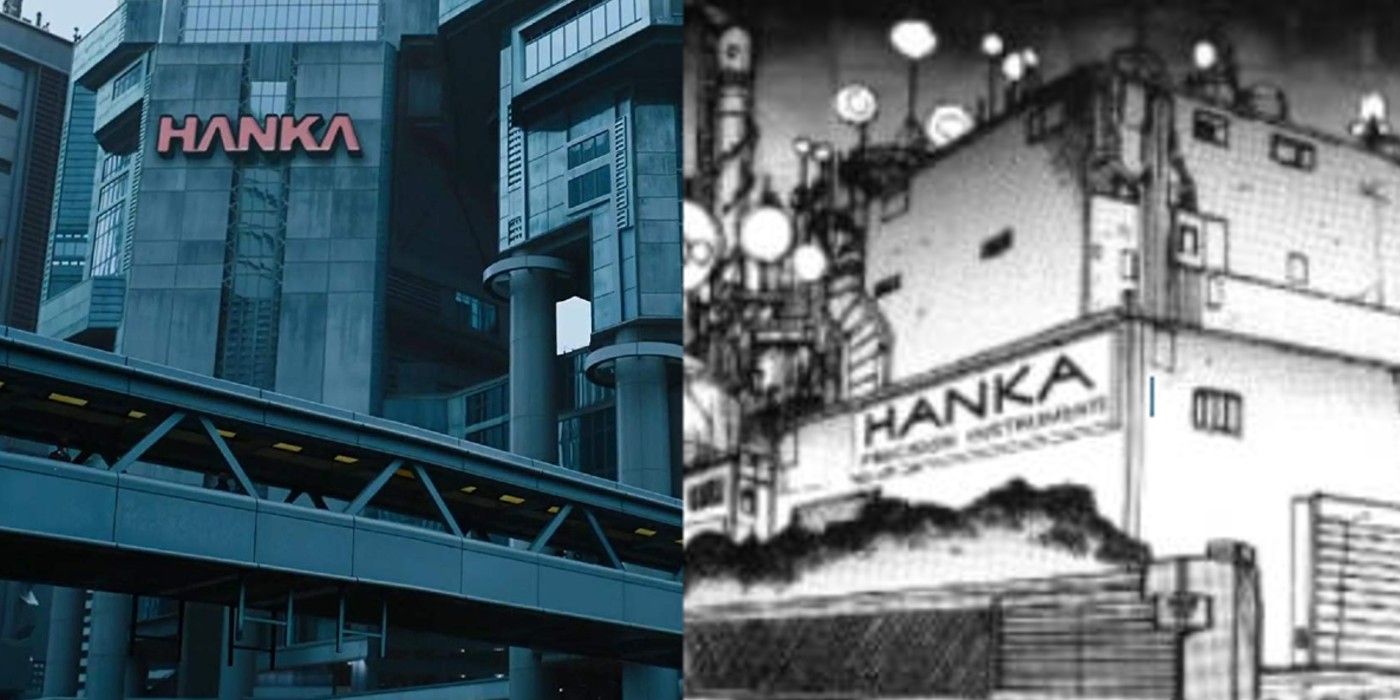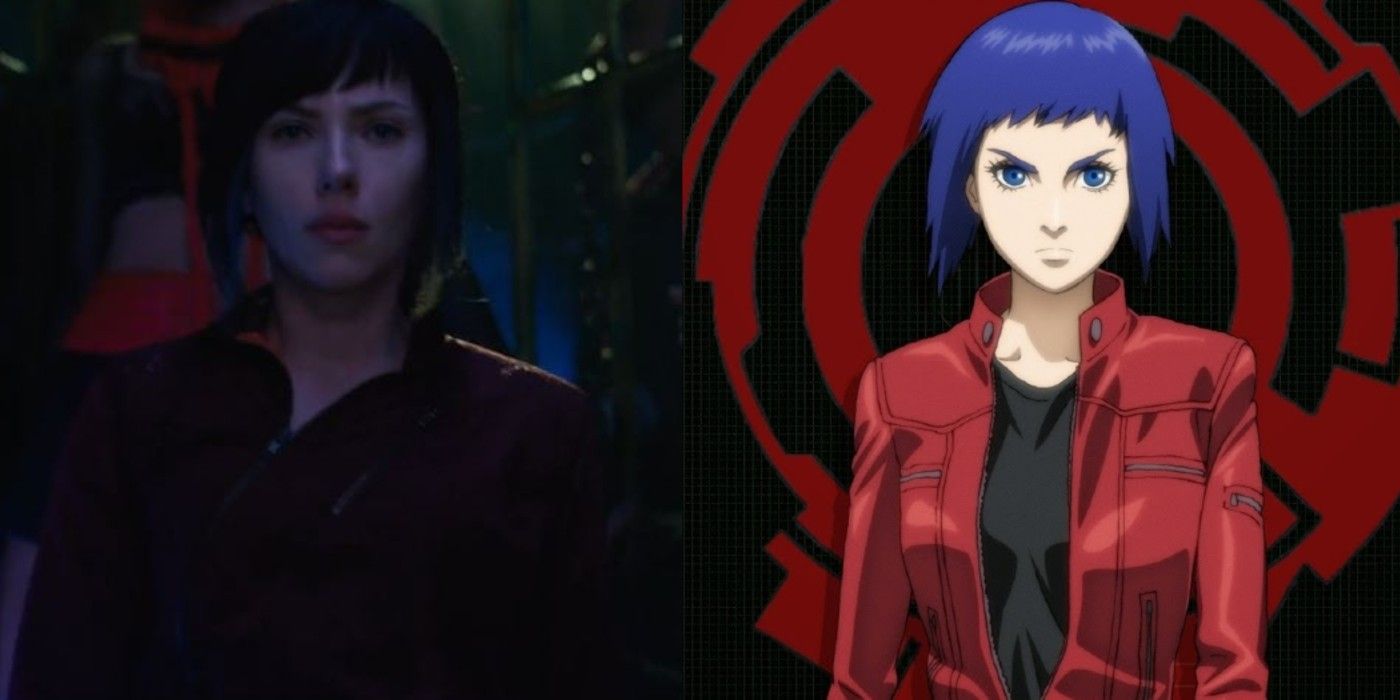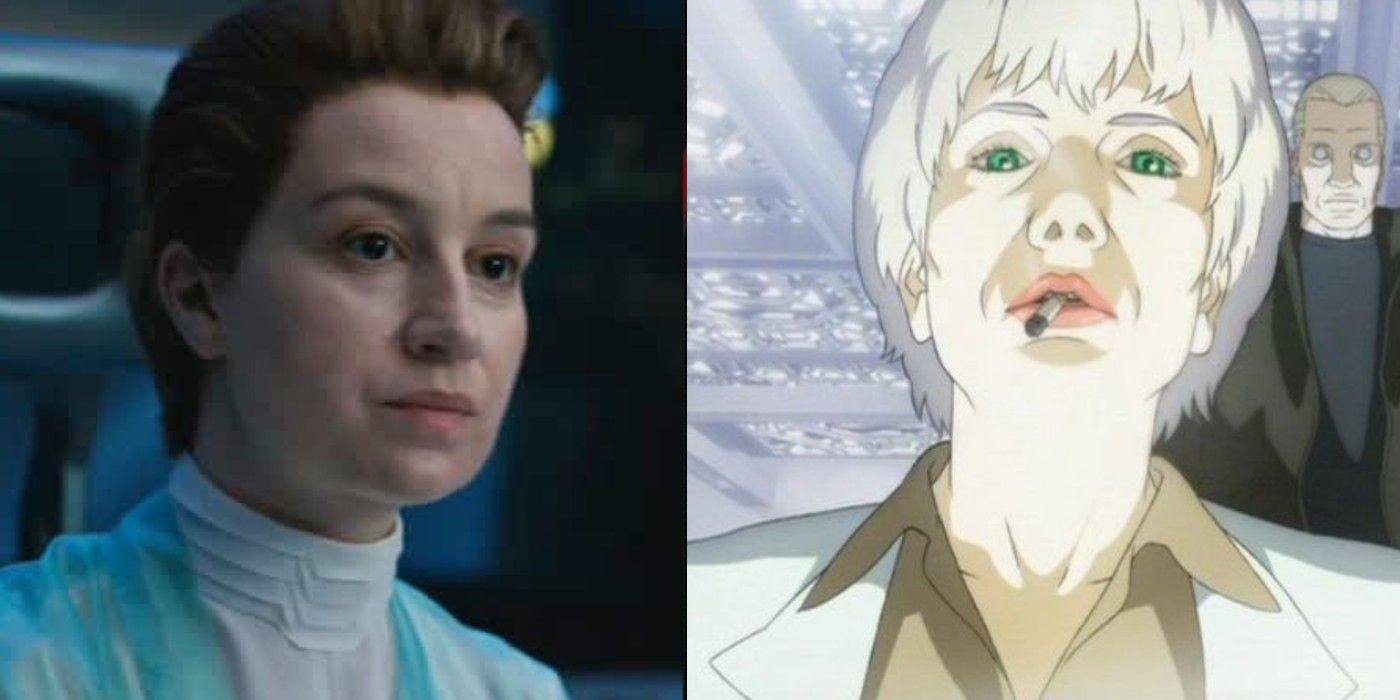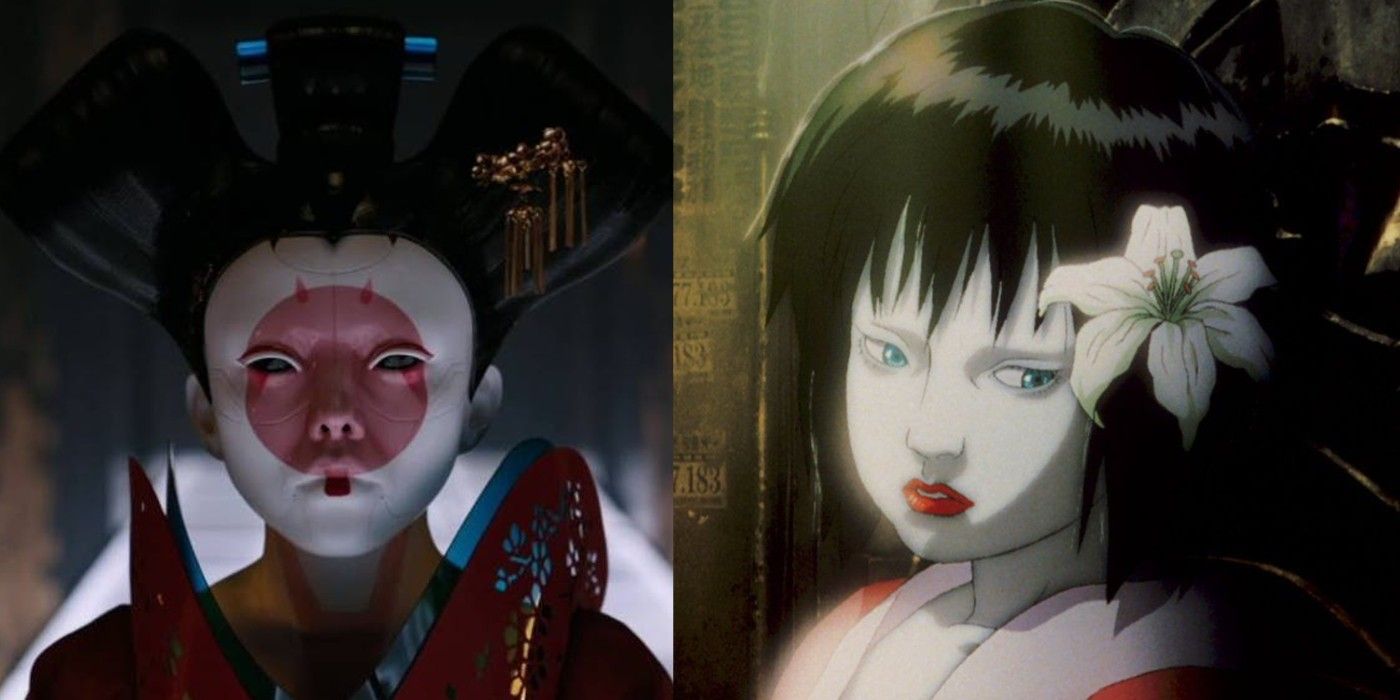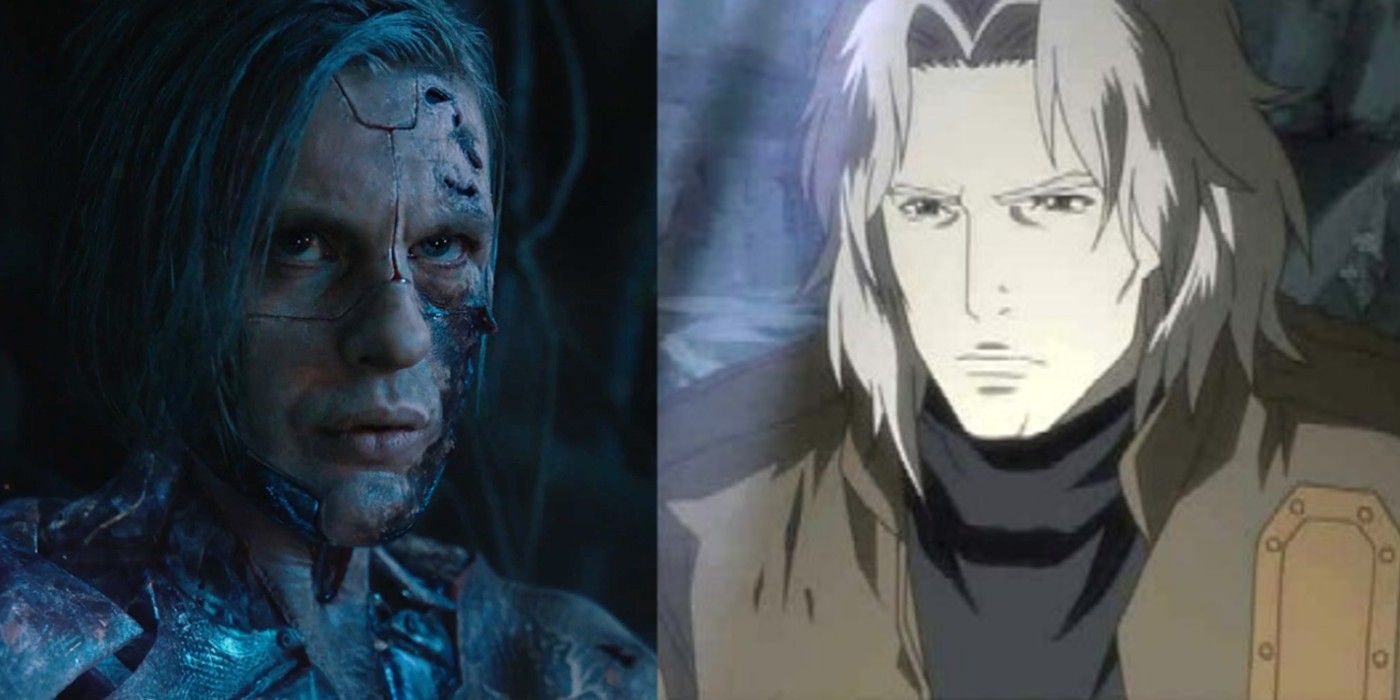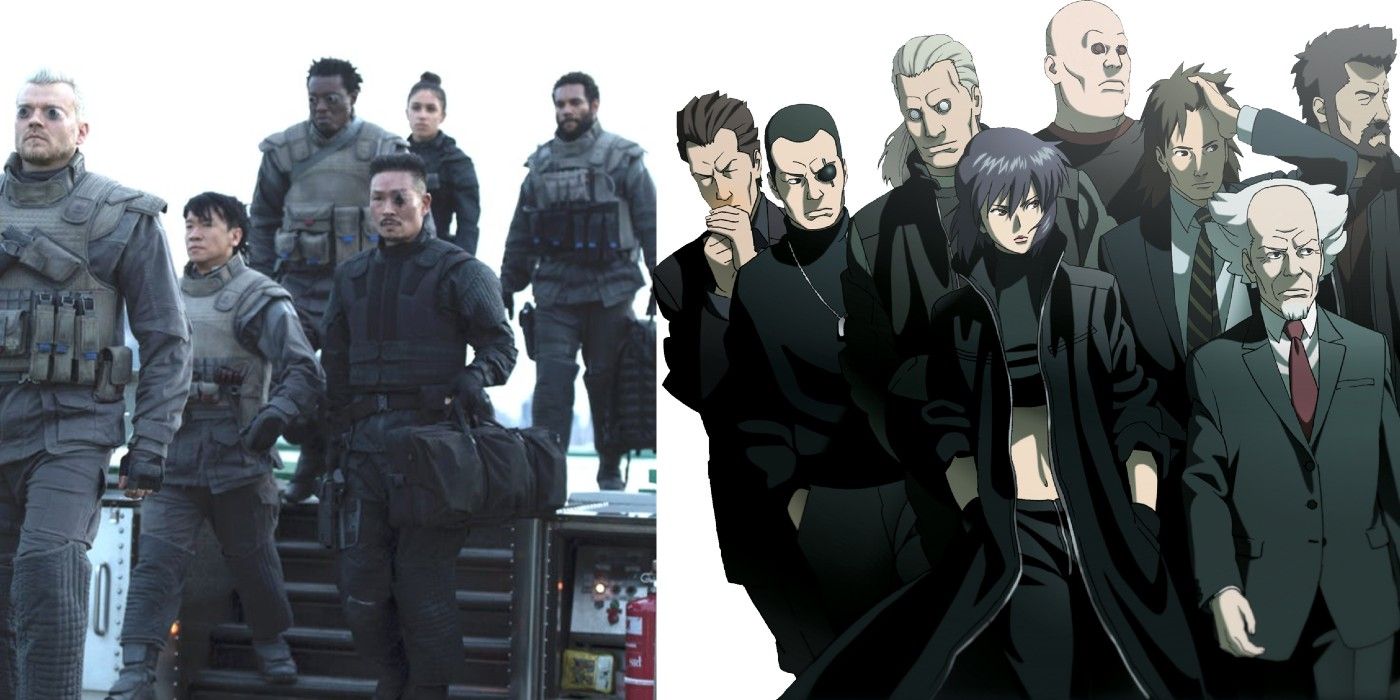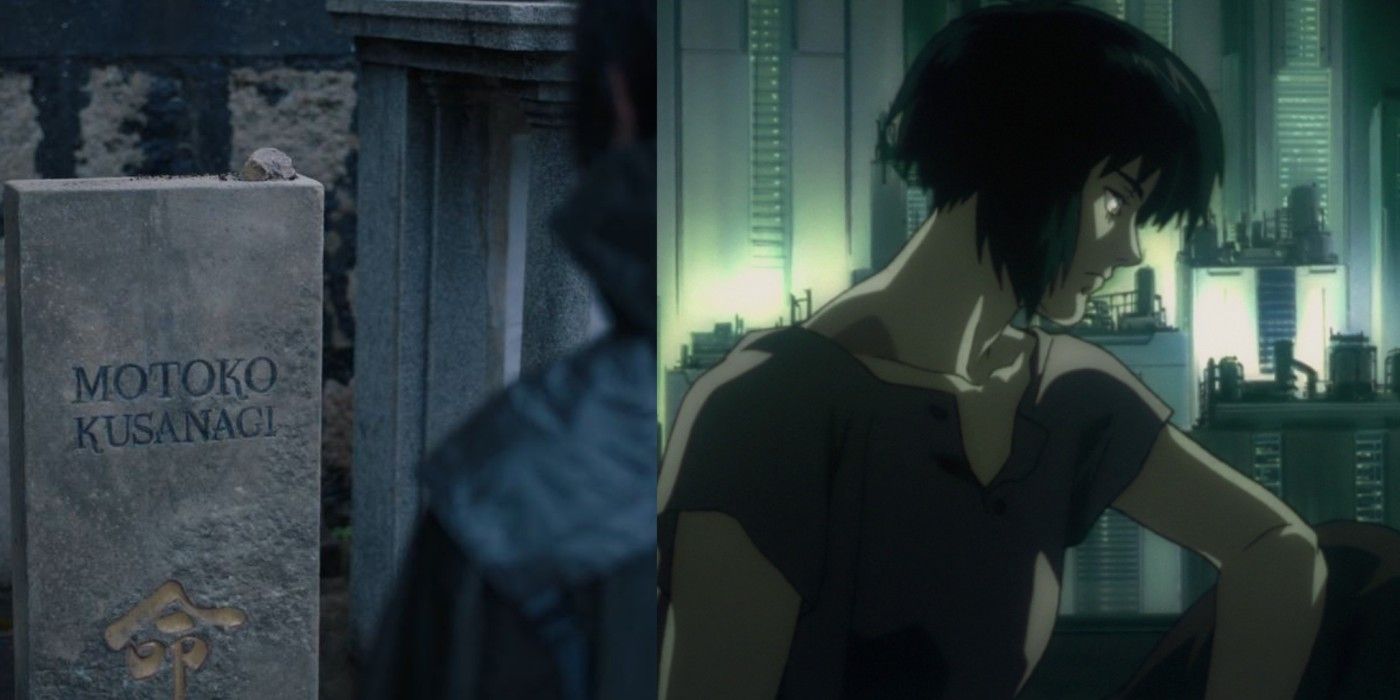Set in a future where the line between robots and humans has blurred, Ghost in the Shell follows Major Mira Killian (Scarlett Johansson) and the black-ops team of Section 9 when they are tasked to investigate a string of murders linked to a mysterious figure only known as Kuze. For all the negative reviews that it got, the live-action Ghost in the Shell is actually Hollywood’s most accurate and faithful adaptations of a well-known anime and/or manga.
Not only did the remake take clear inspiration from its source material but there was a clear passion for the story being told – something that can’t be said for Dragonball: Evolution. But even the most observant fan of the series may have missed, so here are 10 such details from Ghost in the Shell that you may not have noticed.
The Movie Borrows From Different Ghost In The Shell Stories
There’s a lot of Ghost in the Shell material to cover, making it impossible to use everything for a single feature-length movie. To circumvent this, the filmmakers instead picked the best aspects of each incarnation for the live-action adaptation.
The main story that revolves around the Major’s struggle with an identity crisis are heavily based on the episode AFFECTION from Stand Alone Complex 2nd GIG and Ghost in the Shell: Innocence. Meanwhile, visual cues are taken from the other material, particularly from the original 1995 movie.
Some Scenes Are Shot-for-hot Remakes
As mentioned above, Ghost in the Shell used the original movie as the basis for some of its more visually stunning sequences. Some examples include the Major’s introductory mission, her meditative dive, and her fights with the garbage man and the Spider Tank during the finale.
The most prominent example is the remake’s prologue, where the Major’s cyborg body is first constructed. This is a faithful digital recreation of the original opening which was beautifully animated through traditional means, although the song Making of Cyborg was played over the ending credits instead of the beginning.
Hanka Robotics
The remake’s main antagonist represents Hanka Robotics, the world’s leading manufacturer of augmentive technology such as Cyberbrains. While the Hanka corporation does appear in the original manga, the movie gives them more relevance than they previously had.
Named Hanka Precision Instruments, the company attempted to implant children’s Ghosts into robots to achieve more life-like functions. Due to Hanka’s incompetence, the robots went berserk, leading to many deaths and their president’s arrest. They’re still in business, though no longer as profitable as they used to be. Also, the company Locus-Solus stole their unethical experiment and refined it.
The Major’s Red Suit
When the Major and Batou follow a lead to a nightclub, Major is shown wearing and kicking ass in a red leather outfit. This isn’t just her clubbing get-up but an obvious homage to her appearance in Ghost in the Shell: Arise. Major also got her blue highlights here, previously sporting black or purple hair.
Of the Ghost in the Shell spin-offs, Arise is the most divisive due to the changes it makes to the canon and characterizations. It also stars the youngest incarnation of the Major, with her looking more like a teenager than a soldier.
Dr. Dahlin is Dr. Haraway
Section 9’s go-to robotics consultant is Dr. Dahlin, a chain-smoker with a very distinct augment for her eyes. While she has a supporting role in the Major’s line of work, she was based on a minor player in the second Ghost in the Shell movie.
Dr. Dahlin was lifted from Dr. Haraway in Innocence, where she helped out with Batou and Togusa’s initial investigation regarding a murderous gynoid. After her brief scene, Dr. Haraway is never seen again whereas Dr. Dahlin appears every now and then in the remake before she’s killed by Kuze.
The Killer Robot Geisha
During her introductory mission, the Major makes quick work of some assassins and their killer Geisha androids. The murderous Geishas are practically a staple of Ghost in the Shell, appearing in an episode of Stand Alone Complex while playing a prominent role in Innocence.
In the series, the Geishas were just hacked robots that turned on their guests. In the movie, the Geisha gynoids (i.e. sex robots) are the end result of Locus-Solus’ aforementioned illegal ghost dubbing experiments. Batou puts a stop to their creation and killing spree in Innocence with the help of the Major.
Gabriel The Dog
In the Ghost in the Shell remake, Batou is shown to have a soft spot for stray dogs, particularly for a basset hound he named Gabriel. Later on and just as he did in the anime, he’s shown taking care of Gabriel.
Batou is almost never seen without Gabriel when he’s at home or taking some R&R, making his appearance in the movie a nice callback for fans of the anime. This is also a reversal of Batou’s characterization from Stand Alone Complex, where he complained about animals not liking him. That, and author Mamouru Oshii really likes basset hounds.
Kuze Is A Combination Of Major Villains
Much to fans’ surprise, Ghost in the Shell uses Kuze as the initial antagonist. He isn’t terrible but of those the Major faced before, Kuze is arguably the least popular. He hails from Stand Alone Complex 2nd GIG, where he was a terrorist who wanted to ascend a higher plane of digital existence.
However, he still incorporates elements of The Puppet Master and The Laughing Man. Kuze’s appearance, actions, and death are heavily based on The Puppet Master’s from the original movie, while he possesses The Laughing Man’s methods and general disdain for society.
Section 9 Is Accurate To The Manga
The black-ops team Section 9 is a mainstay in Ghost in the Shell, so it’s unsurprising that they appeared in the remake. It’s just a pity that they were barely noticeable after getting lost in the shuffle.
The filmmakers put a lot of effort was put into making Section 9’s appearances as faithful as possible. Despite some changes such as their race or the addition of the new female member Ladriya, Section 9 is mostly faithful to their illustrated counterparts. Their roles are also correct, such as Ishikawa being the hacker and Saito taking sniper duty.
The Real Major Mokoto Kusanagi
Ghost in the Shell’s most controversial aspect was casting of Scarlett Johansson as The Major, an icon of Japanese pop culture. Johansson’s Major is named Mira Killian, but this is a false memory implanted in the mind of a teenager named Motoko Kusanagi.
Those unfamiliar with the source materials may miss the significance of this reveal, since Major’s name in all previous incarnations is indeed Motoko Kusanagi. The remake had an interesting idea of how to revitalize her identity but didn’t fully develop it, robbing it of the chance to be truly thought-provoking and looking tone-deaf as a result.

